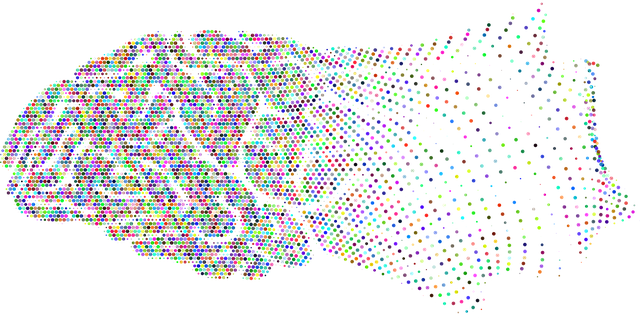Westminster Somatic Experiencing (WSE) Therapy leads community initiatives to enhance mental wellness support for diverse populations, focusing on trauma resolution and holistic emotional healing. Their programs empower individuals with Mind Over Matter principles, fostering resilience and building stronger communities. By collaborating with local providers, leveraging cultural sensitivity, and utilizing innovative communication methods like podcasts, WSE reaches underserved communities effectively. Impact is measured through attendance rates, feedback, and behavioral changes, ensuring program relevance and sustained engagement.
Community outreach programs play a pivotal role in fostering connection and enhancing well-being. This article explores the implementation of such programs with a unique focus on integrating Westminster Somatic Experiencing (WSE) Therapy. From understanding the benefits and setting goals to practical steps for successful deployment, we delve into strategies that leverage WSE to create impactful community engagement. Additionally, we discuss measuring outcomes and sustaining long-term relationships, providing valuable insights for organizations aiming to make a lasting difference through outreach initiatives.
- Understanding Community Outreach Programs: Benefits and Goals
- Integrating Westminster Somatic Experiencing Therapy (WSE) into Outreach Strategies
- Practical Steps for Implementing Successful WSE Community Outreach Programs
- Measuring Impact and Sustaining Long-term Engagement in the Community
Understanding Community Outreach Programs: Benefits and Goals

Community outreach programs, like those offered by Westminster Somatic Experiencing Therapy, are designed to extend support and mental wellness services to diverse communities. These initiatives aim to bridge gaps in access to care, focusing on areas where resources may be limited or underrepresented populations face barriers to emotional healing processes.
The benefits of such programs are multifaceted. They not only enhance the reach of mental health services but also foster community engagement and resilience. By incorporating Mind Over Matter principles, these outreach efforts empower individuals to take charge of their emotional well-being. Ultimately, they contribute to building stronger, more connected communities where people can thrive through holistic approaches to mental wellness.
Integrating Westminster Somatic Experiencing Therapy (WSE) into Outreach Strategies

Integrating Westminster Somatic Experiencing Therapy (WSE) into community outreach programs offers a unique and powerful approach to mental health support. WSE focuses on resolving trauma and stress, enhancing individuals’ resilience, and promoting self-regulation. By incorporating this therapy into outreach strategies, healthcare providers can address the profound impact of trauma and stress within communities, especially in underserved populations.
This holistic approach goes beyond traditional counseling by integrating body and mind, making it an effective tool for community well-being. Moreover, WSE complements existing mental health services by empowering individuals to take charge of their mental health through self-care routine development. Additionally, healthcare provider cultural competency training is essential to ensure that WSE practices resonate with diverse communities, fostering trust and accessibility in delivering the Risk Assessment for Mental Health Professionals.
Practical Steps for Implementing Successful WSE Community Outreach Programs

Implementing successful Westminster Somatic Experiencing (WSE) community outreach programs involves several practical steps. Firstly, identify the specific needs and goals of your target community, whether it’s addressing anxiety relief in schools or fostering mental wellness among underserved populations. Tailor your approach to resonate with cultural nuances and competencies, ensuring inclusive participation.
Engage local healthcare providers by offering workshops on WSE techniques and integrating these practices into their existing services. Additionally, leverage modern platforms like a Mental Wellness Podcast Series Production to reach wider audiences. By combining targeted outreach, cultural sensitivity, and innovative communication methods, you can create impactful programs that enhance the mental health and well-being of the communities you serve.
Measuring Impact and Sustaining Long-term Engagement in the Community

Measuring the impact of community outreach programs is a crucial step to ensure their long-term success and sustainability. By implementing robust evaluation methods, organizations like Westminster Somatic Experiencing Therapy can assess the effectiveness of their initiatives in promoting emotional well-being. This involves tracking key performance indicators (KPIs) such as attendance rates, participant feedback, and behavioral changes within the community. For example, a successful program might lead to increased awareness about mental wellness resources, reduced stigma associated with seeking help, and improved overall emotional resilience among participants.
Sustaining engagement in the community requires ongoing innovation and adaptation. Westminster Somatic Experiencing Therapy can foster long-term commitment by leveraging Emotional Well-being Promotion Techniques and Crisis Intervention Guidance. Regular feedback sessions, follow-up surveys, and community consultations enable the program to address emerging needs and preferences. By staying responsive to the evolving landscape of mental health challenges, these initiatives ensure that their efforts remain relevant and impactful over time, benefiting the community in meaningful ways.
Community outreach programs, enhanced by the integration of Westminster Somatic Experiencing (WSE) therapy, offer profound benefits for both individuals and communities. By implementing successful WSE outreach strategies, as outlined in this article, organizations can foster emotional well-being, reduce stress, and promote resilience among participants. Measuring impact and sustaining long-term engagement through regular evaluation ensures the programs’ continuous improvement and longevity. Through these efforts, we can create more connected, resilient, and thriving communities.














